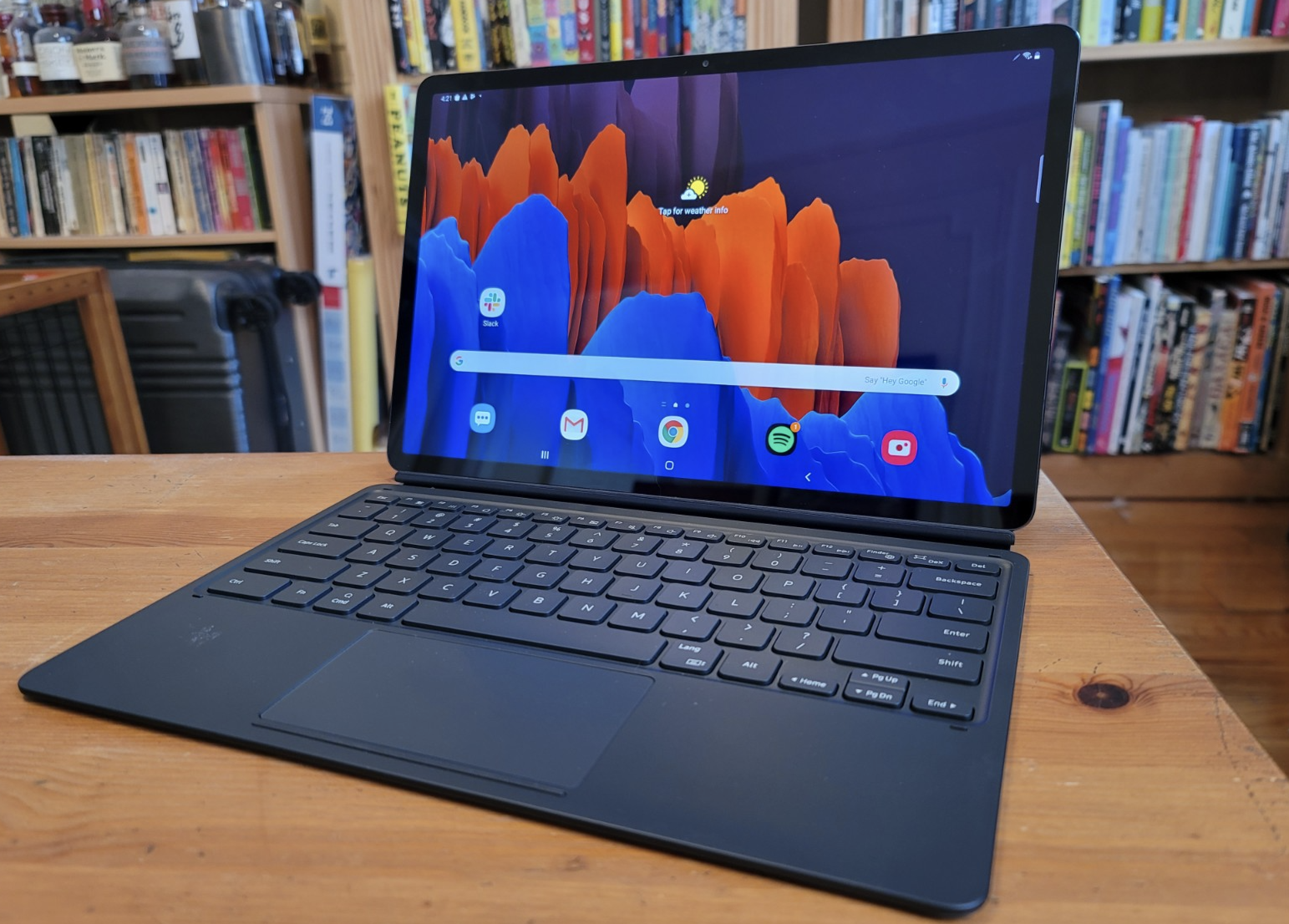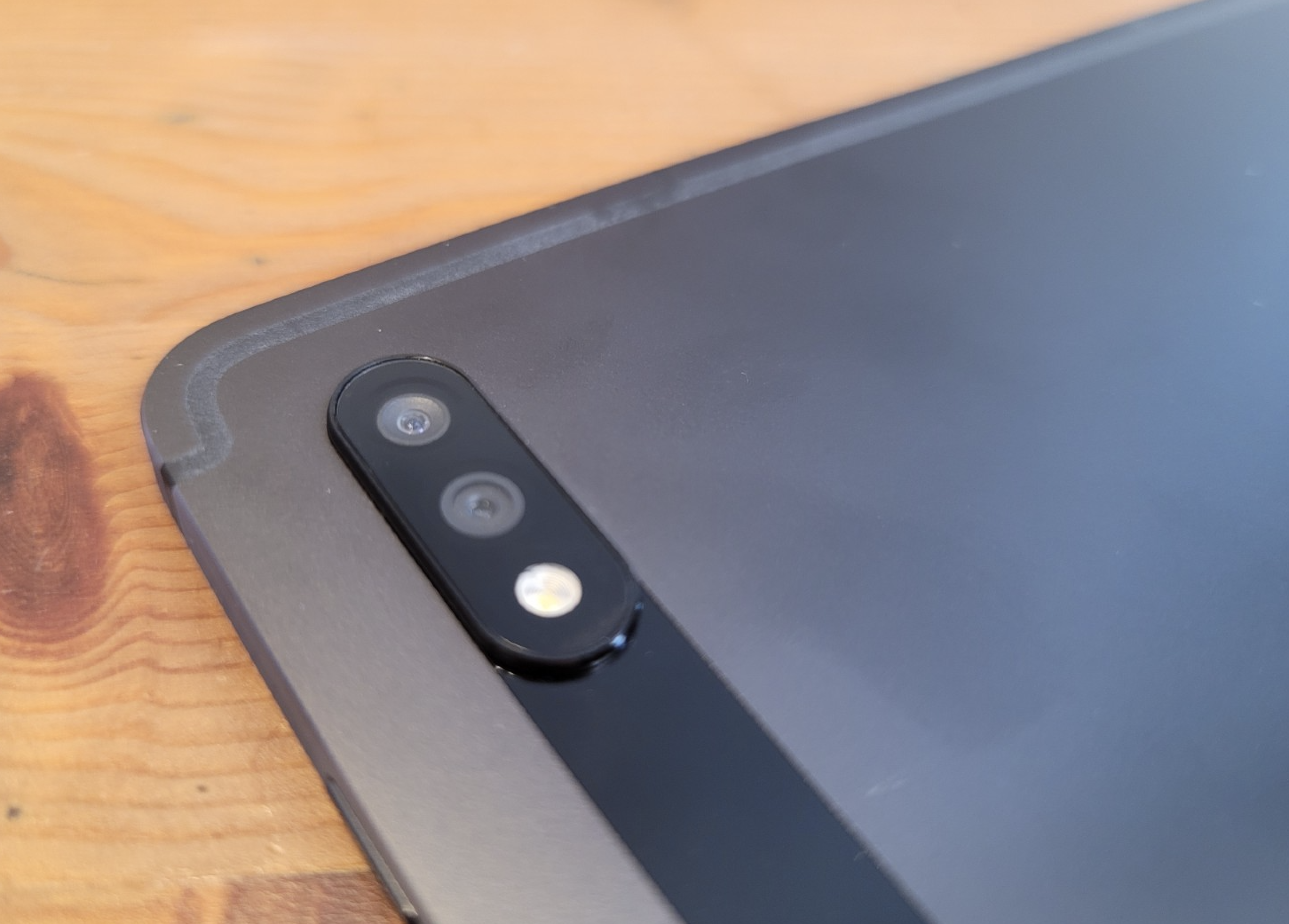Samsung Galaxy Tab S7+ hands-on
During an Unpacked event that featured the announcement of five key new devices, the Galaxy Tab S7 didn't get a ton of love. Understandable, perhaps. It doesn't quite have the star power of the Note line, nor does it have the novelty of a new foldable or Bluetooth earbuds. Tablets in general just aren't exciting the way they once were.
But Samsung's continued to plug away. The company makes a lot of tablets. That's just kind of its thing. Why make one when you can make a dozen, each with different price points and target audiences? It's the Galaxy Tab line, however, that's always been the one to watch, providing a premium slate experience designed to complement its Galaxy handsets.

Image Credits: Brian Heater
In fact, in a world where Android tablets are largely the realm of budget devices, Samsung remains one of the few out there still manufacturing a device that can go head-to-head with the iPad. The latest model brings a number of key features, though the biggest of all isn't available on the Tab S7+ review unit the company sent along.
The device will be among the first tablets to receive 5G connectivity. Pricing and availability are still forthcoming on that SKU, though, honestly, I don't imagine a ton of people are going to be demanding cellular connectivity on their tablets as long as so many people continue working from home. When travel finally starts up again, that might be a different story.
That said, the model Samsung sent along just after the Unpacked event is a beast. It's the specced-up version of the Tab S7+, which starts at $849. The higher tier bumps the RAM up from 6GB to 8GB and the storage from 128GB to 256GB. Add in the bleeding-edge Snapdragon 865+, and you've got an extremely capable machine on your hands here.
The design matches the premium specs. Gone is the plasticky design of early models, traded up for a sleek and sturdy glass and aluminum design. It's a tablet that looks and feels as premium as its price tag indicates. It's a bit heavy, though, at 1.26 pounds for the 12.4-inch model, versus 1.41 pounds for the 12.9-inch iPad Pro. The truth about these devices is they're no longer designed to be held up above your face as you lie in bed.

Image Credits: Brian Heater
They are, of course, intended to be real multitasking work/play machines. I should note that I'm writing this as someone who continues to use a laptop for all of his work, but I can certainly appreciate the advances the category has made in recent years. I also know a handful of people who have mostly successfully traded in their work machines for a tablet, be it an Android device, Surface or iPad.
A tablet's worth as a work machine is, of course, only as good as its case - a statement you can't reasonably make about most products. Along with the device itself, Samsung has upgraded the case in a couple of nice ways. The typing experience doesn't quite match a devoted laptop keyboard, but it's been pretty well refined. The keys have a decent amount of travel and a nice spring for a laptop cover. The leather case also detaches into two pieces, so the back can be used as a stand, without the keyboard present. Of course, the trade-off for this sort of case is the fact that it can't really be used on one's lap without things falling and pieces detaching.
It wouldn't be a Samsung tablet without the S Pen, of course. The peripheral is, thankfully, included. There's no slot for the stylus (something I keep asking for but never get; life's hard sometimes), but it does snap magnetically to the top of the device, albeit a bit weakly. Samsung has certainly built up a nice little ecosystem for the input device, and I'm pretty consistently impressed that it's able to recognize and convert my chicken scratch. Seriously, my already terrible penmanship has only atrophied over time.

Image Credits: Brian Heater
Points, too, for a beautiful OLED display with a 120Hz refresh rate. Depending on what you're looking to do with it, you might need to toggle that to save on battery life. Both models are pretty solid on that front, with 8,000 and 10,900 mAh, respectively, but the 5G models will no doubt take a hit.
Samsung is really pushing DeX hard - even harder than it has in the past. You can set it to automatically trigger the desktop approximation when you plug in the keyboard. The interface is an attempt to approximate something akin to the Windows desktop experience, but a number of apps still don't support the interface and overall it still feels clunky. It's easy to extrapolate a bit and imagine how it will improve things like multitasking, but it doesn't feel like it's quite all the way there.